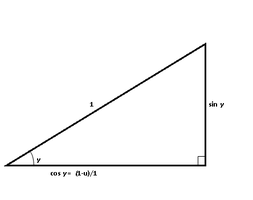Hi
I'm trying to design a board with a set of nested polygons offset at various angles. In order to do this as neatly as possible, I am eager to find a formula for the average distance between a point on one polygon (with N+1 sides and "radius" r+d) to a point on the next polygon in (with N sides and radius r), as the inner polygon rotates through an angle of 2π/N.
I believe that, to do this, I need the value of the following horrid definite integral, but my integration skills are poor and nowhere near good enough for this. Is anyone able to give me a value, in terms of r, d, and N (which can all be regarded as constants for this purpose)?
1/4 × definite integral from 0 to π/N of
[square root of
(r + d - r cos(2πz/N) )² + (r sin(2πz/N) )²]
dz
I am using "radius" to mean the distance between the centre and any vertex of the polygon.
Thanking you in anticipation.
I'm trying to design a board with a set of nested polygons offset at various angles. In order to do this as neatly as possible, I am eager to find a formula for the average distance between a point on one polygon (with N+1 sides and "radius" r+d) to a point on the next polygon in (with N sides and radius r), as the inner polygon rotates through an angle of 2π/N.
I believe that, to do this, I need the value of the following horrid definite integral, but my integration skills are poor and nowhere near good enough for this. Is anyone able to give me a value, in terms of r, d, and N (which can all be regarded as constants for this purpose)?
1/4 × definite integral from 0 to π/N of
[square root of
(r + d - r cos(2πz/N) )² + (r sin(2πz/N) )²]
dz
I am using "radius" to mean the distance between the centre and any vertex of the polygon.
Thanking you in anticipation.

